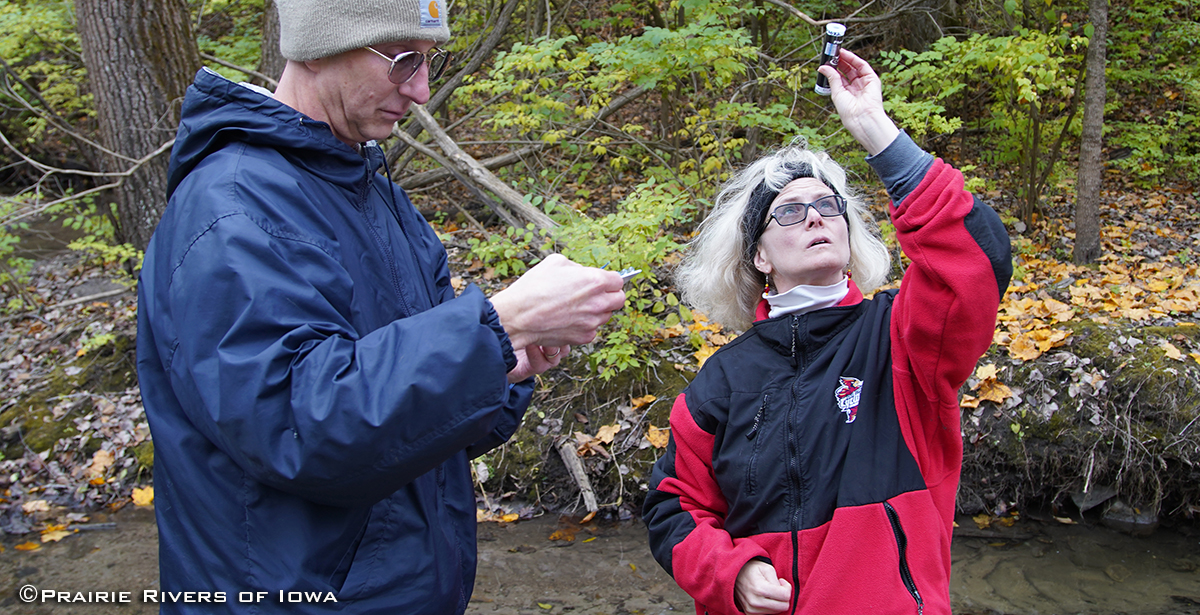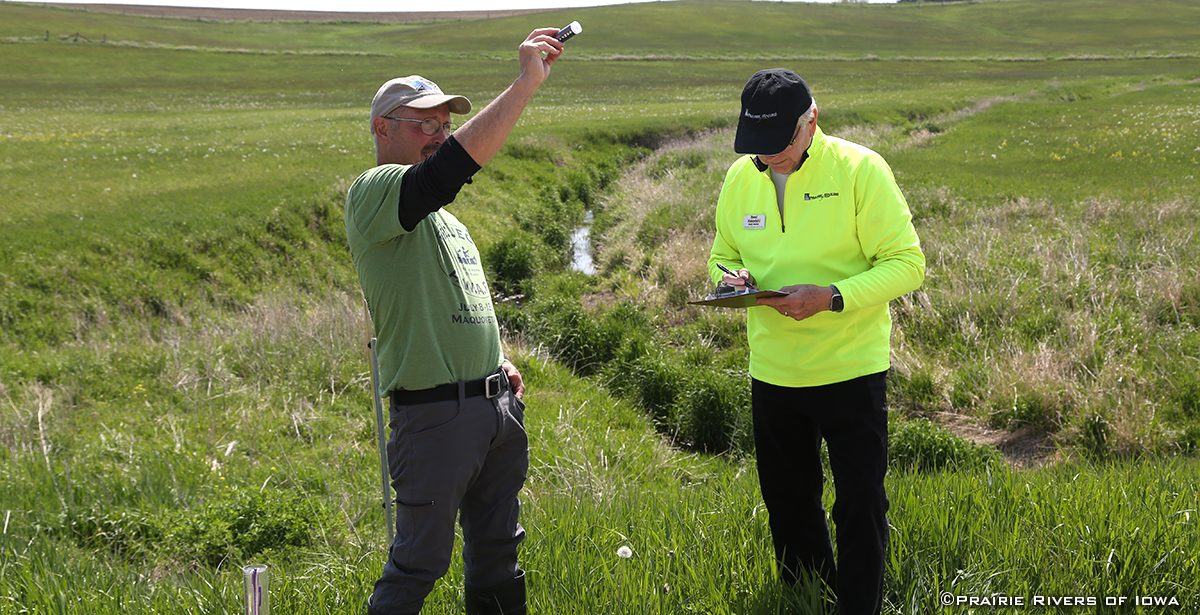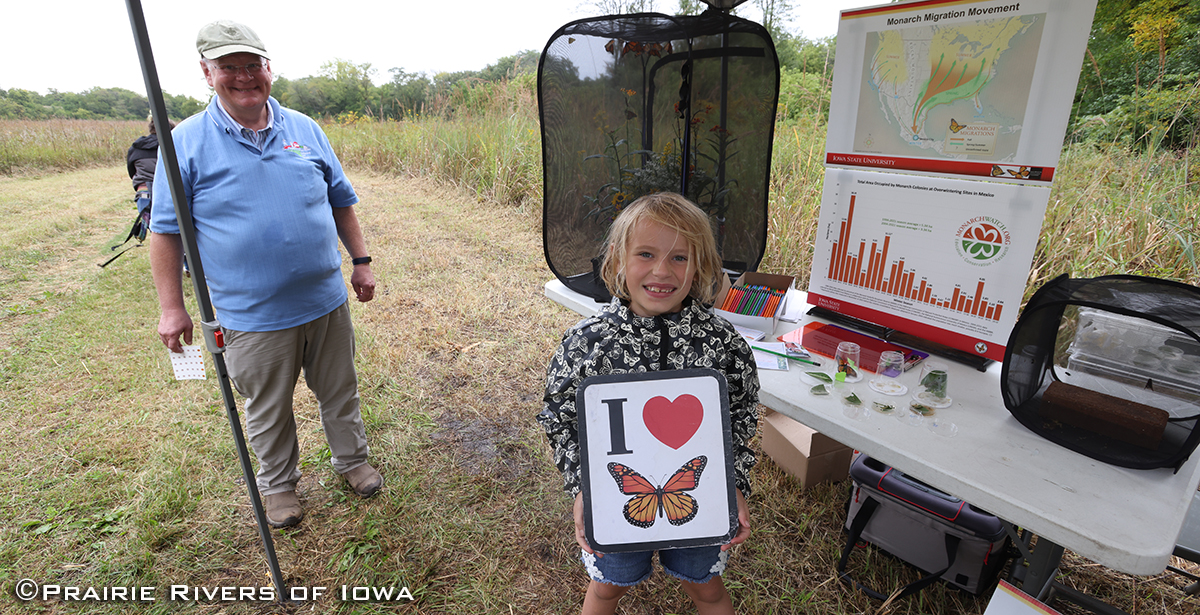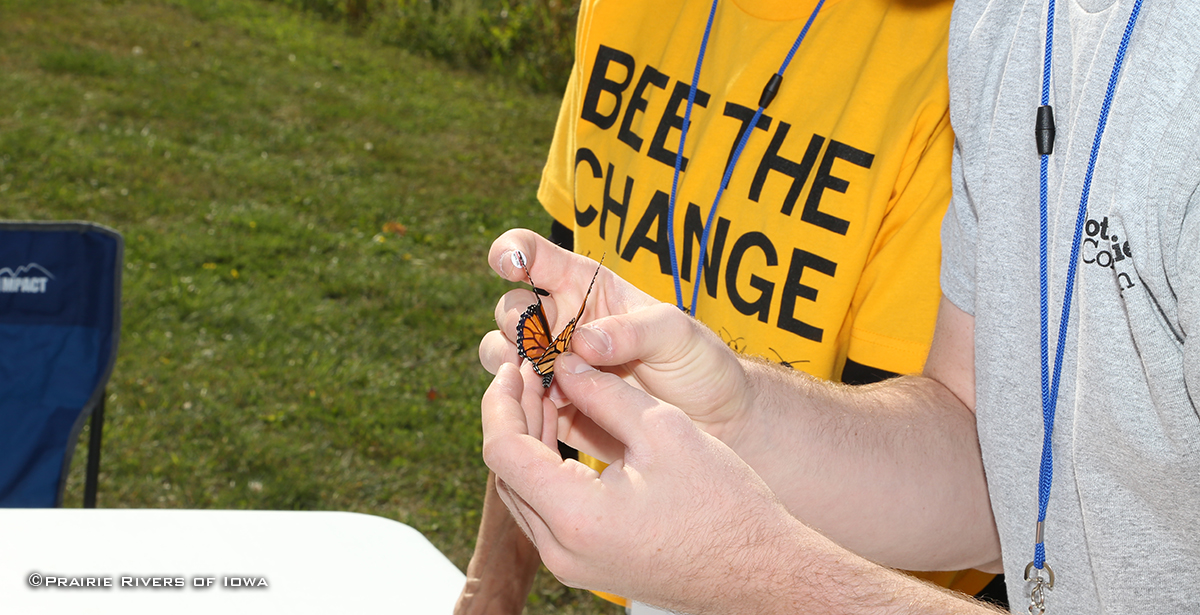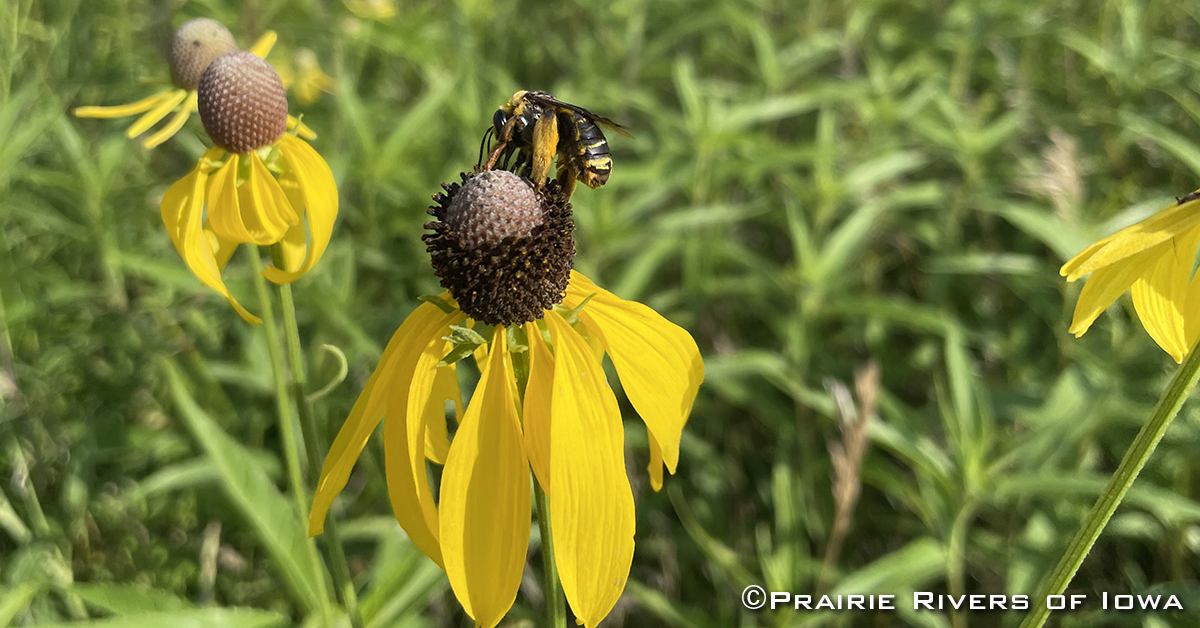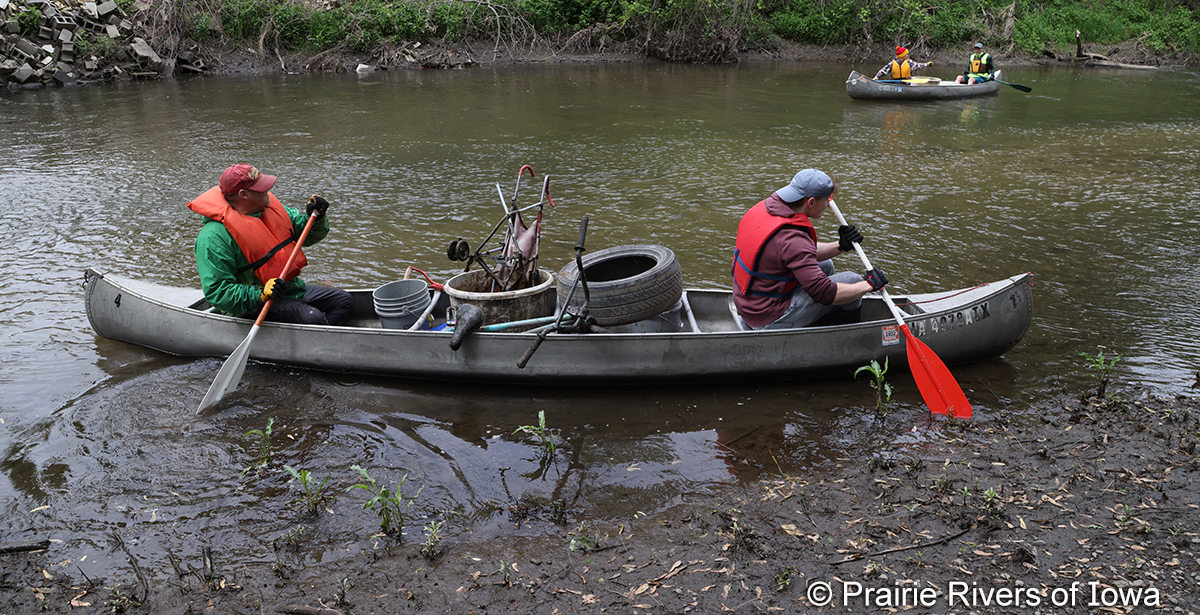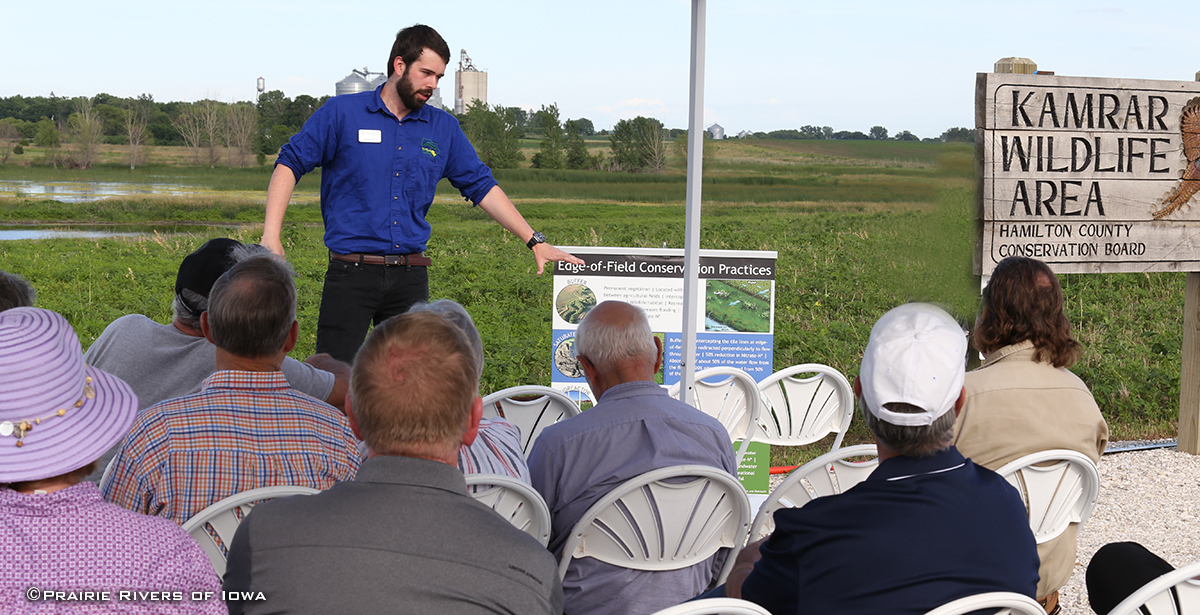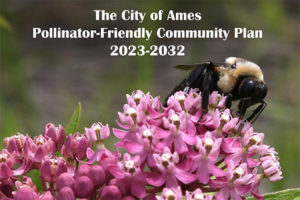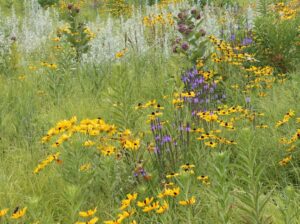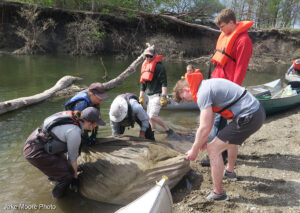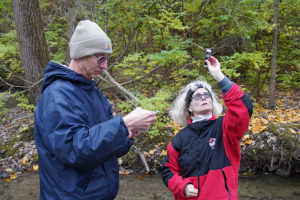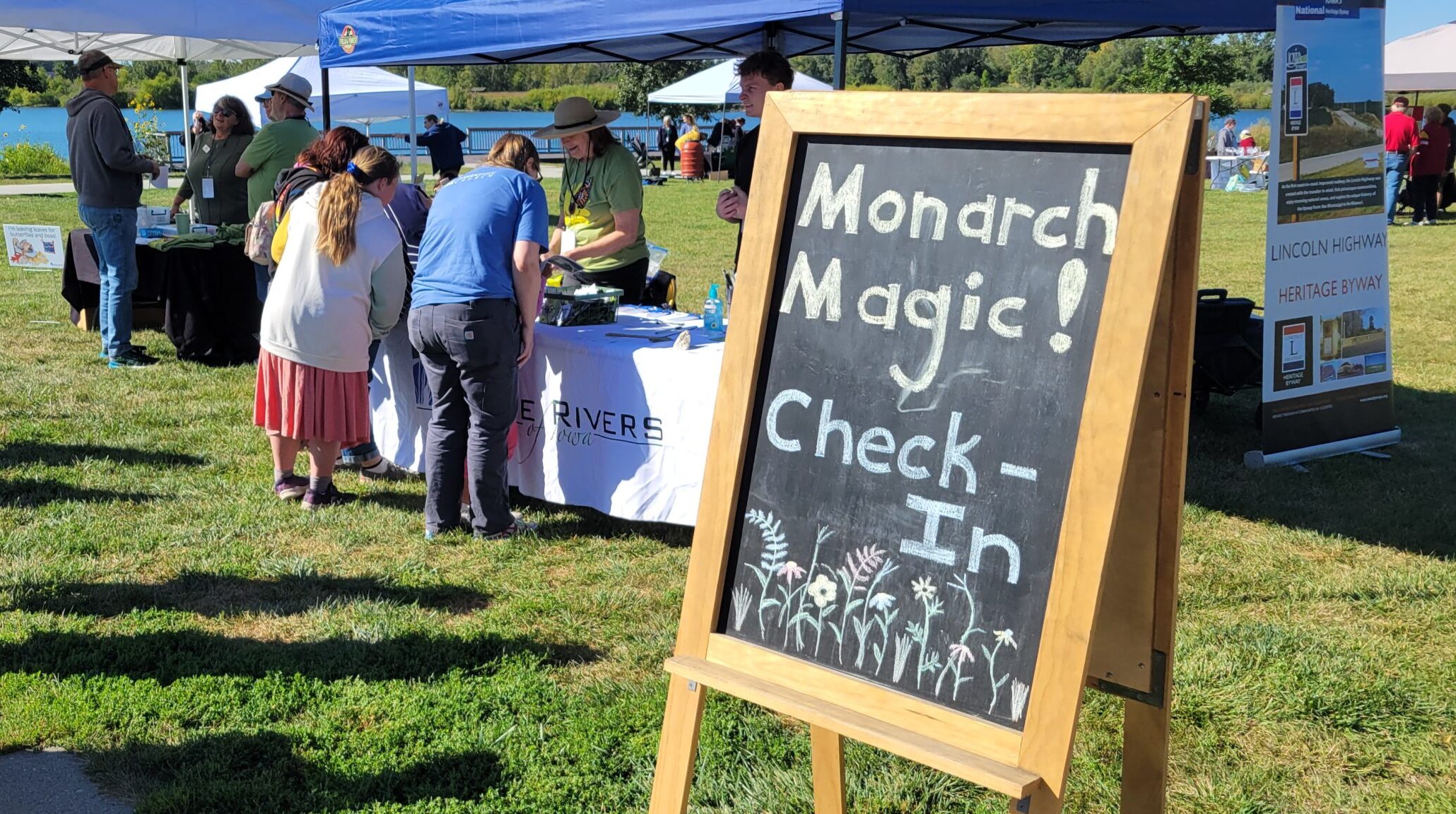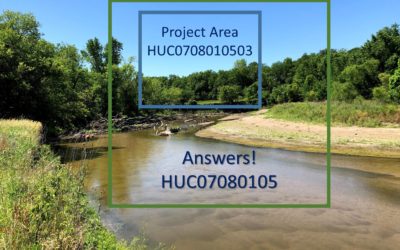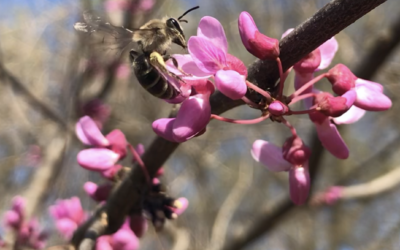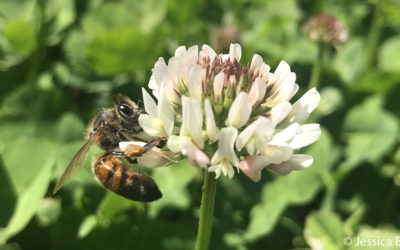Watersheds and Wildlife
The Watersheds and Wildlife Program works to improve water quality in rivers and lakes and to restore habitat for the 100 species of butterflies and 400 species of bees found in Iowa. We accomplish this work through robust education and monitoring, and by partnering with both private landowners and local government.
What’s a watershed? Confused about water quality? Here’s an FAQ with links to some of our most accessible resources.
Past projects have focused the Ioway Creek and Skunk River watersheds in Story, Boone, and Hamilton counties.
Here is what we’re up to now:
Ames Pollinator-Friendly Community Plan
Prairie Rivers and the City of Ames have a vision to become a leader in developing and sustaining pollinator habitat that will enrich the quality of life for the people and wildlife of Ames.
Prairie Seed Bank
Creek Cleanups
So far, we helped organize six volunteer events that removed over 12,700 pounds of trash from Ioway Creek, the Skunk River and other streams in central Iowa. Depending on the weather, we may be walking, wading, or paddling canoes, but it’s always a good time! Keep an eye on our Events page–we usually plan one for late April or early May.
Water Monitoring in Story County
Water quality in most creeks and lakes in Story County is not tested by state agencies, so in 2020 we worked with 9 partner organizations to plan for how we could sustain a monitoring program at the local level. Prairie Rivers continues to support the effort by collecting samples, organizing volunteer events, and making sense of the data.
Environmental Education and Community Events
Monarch Magic is an annual monarch tagging and educational event in Ames aimed at families. We also participate in tabling events and regularly give talks about water quality, pollinators, and conservation to community groups around the state.
Educational Videos
Conservation Connection Blog
A big part of our work is telling engaging stories to help explain the science and policy behind the environmental issues we work on. Here are three of our latest posts from the Conservation Connect Blog. We’ve also compiled some of our most accessible content related to soil and water (which can get complicated) as an FAQ.
Think Outside the HUCs
Tracking progress of conservation projects with water monitoring is tricky, but we have some good news to share! You just need to think outside the box…
Trees for the Bees: How to Support Wildlife this Arbor Day!
Planting a tree can be an investment not only of money but of time as well. When thinking about the long-term goals for your property, it’s important to think about the legacy you may leave behind, as the tree will probably outlive you. Planting the right trees can not only increase your property’s appeal; it can also provide habitat for songbirds and pollinators for decades to come! So which trees attract pollinators, are native to Iowa, and look great in our yards?
Clover Lawns: Is the Trend Lucky for Pollinators?
The idea of creating a pollinator-friendly yard is finally taking root, and the idea of a perfect lawn, along with its expense, is being weeded out. Clover lawns are one of the latest trends yard-owners are trying out in an effort to be more environmentally conscious. This new kind of lawn is often touted to support pollinators, require less maintenance, and lower pollution. But do they live up to the hype?
Katelyn Rinicker
Pollinator Conservation Specialist
Dan Haug
Water Quality Specialist

